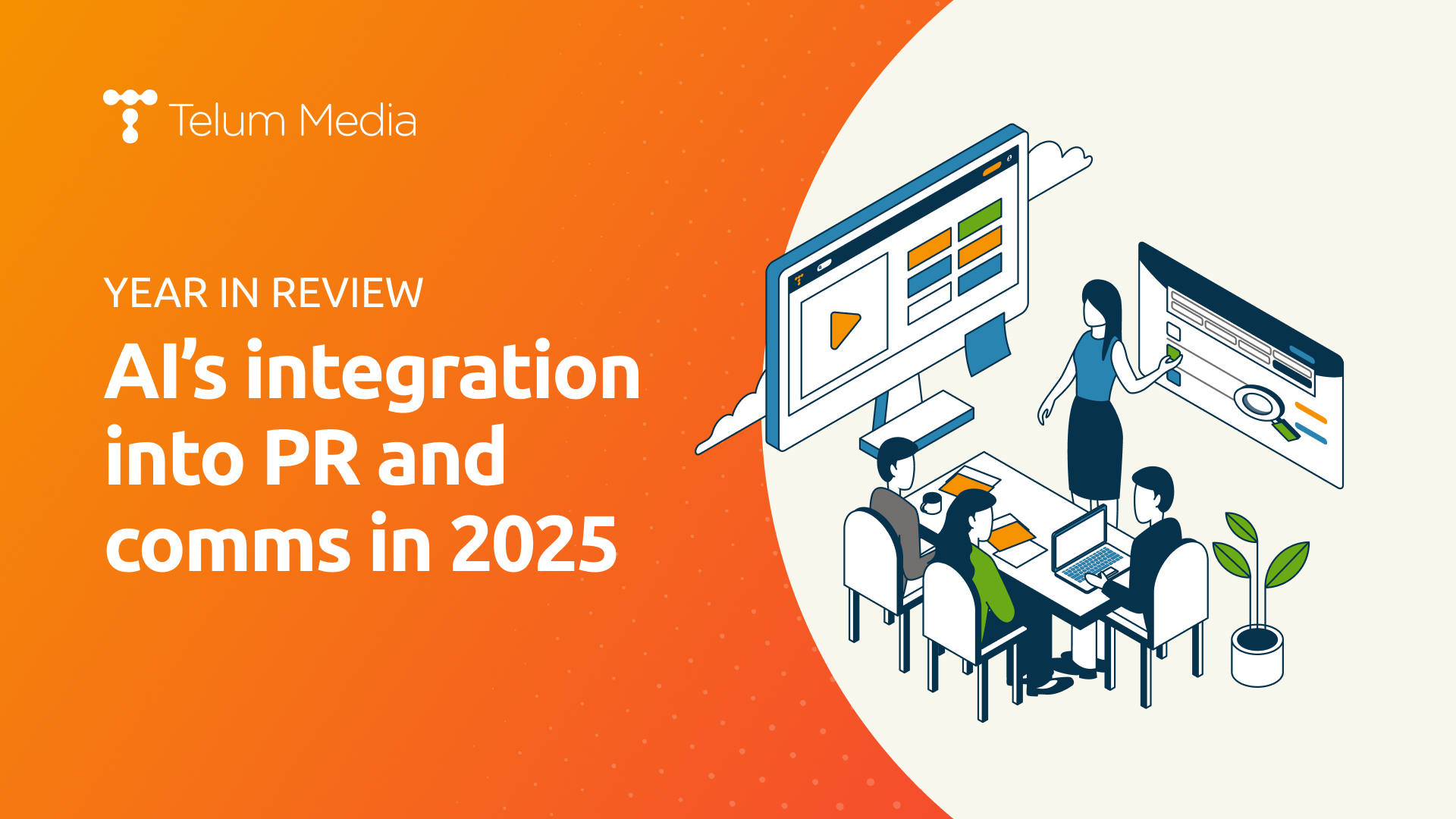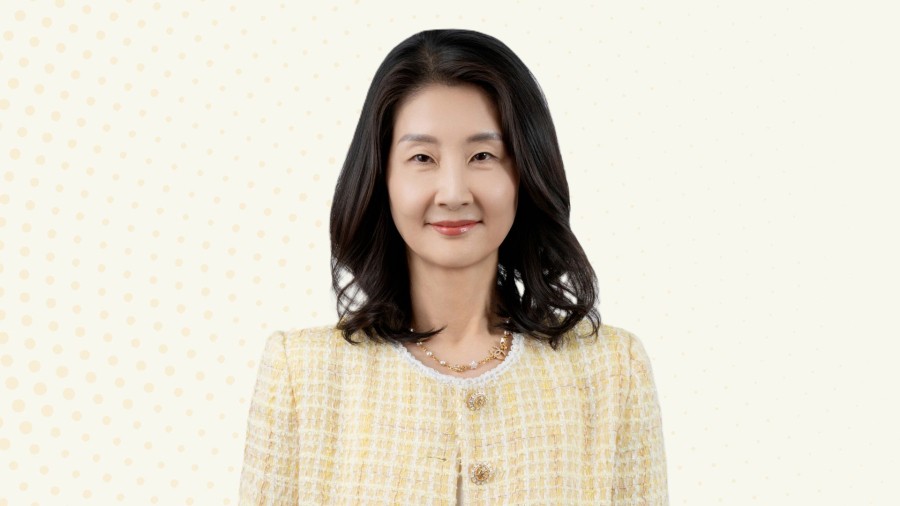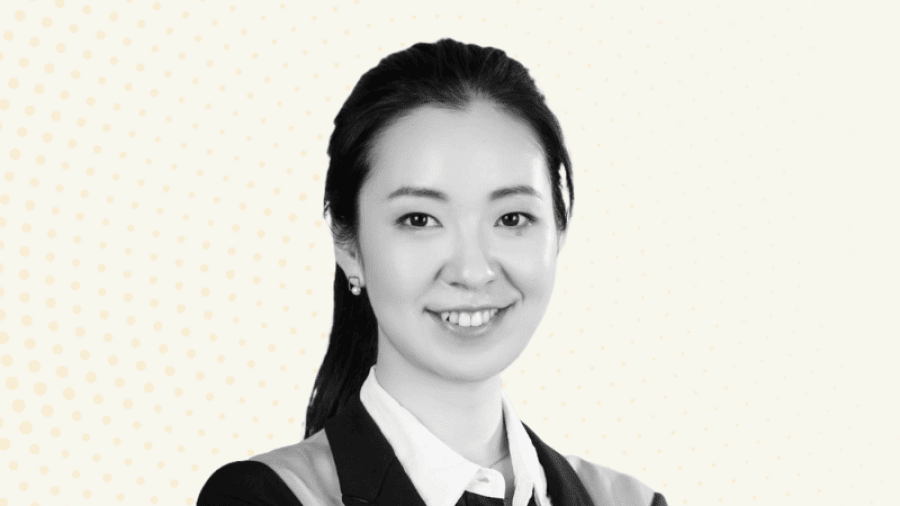Like any other industry, the beauty sector has evolved at a rapid rate over the years and is now valued at approximately $650 billion. As the industry has grown, PR strategies have also transformed, adapting to new trends and challenges.
To explore the evolution of beauty PR, we had a chat with Anna Stark and Tahira Matthews, Co-Founders and Directors of STARK MATTHEWS, who recently celebrated their agency’s 10-year anniversary. Our conversation touched on the shift into digital-first landscape, the involvement of celebrities and influencers, and common misconceptions.
Having been specialists in the beauty PR scene for more than 10 years, how has the industry evolved and what's one thing you don't miss that's been phased out?
When we first started our agency, from a client perspective, it was all about traditional media. While we'd encourage our clients to think digital and social media first, they'd often consider traditional media like print magazines, newspapers, and TV as the ultimate gold standard. Now, it's not just digital and social, engaging and authentic lo-fi brand-owned content is integral to shaping consumer conversations and driving brand love.
From a beauty industry perspective, there are just so many more beauty brands entering the market, and it's never been more saturated. To survive what we call the "Beauty Hunger Games", brands need more than just great products - they need to create an emotional connection with consumers in a way that feels personal and memorable. This need to create two-way connections has driven the rise of consumer activations, taking the brand personality from the screen to the streets, and now playing a key role in overarching PR strategies for many of our clients.
The thing we don't miss? Clients wanting year-long PR strategies. They'd sign off on our big, long strategy at the beginning of the year, and then we just implement the plans throughout the year. Boring! Clients now allow us to be so much more dynamic and responsive to shifting consumer trends and perceptions, resulting in much more impact and a greater ROI.
In today's digital-first landscape, how important are traditional media and physical brand activations in the world of beauty PR?
Brand activations are now more important than ever. When we started our agency 10 years ago, consumer activations were called "experiential" and were few and far between. Now, they play a crucial role.
In an increasingly digital world, people crave real, tangible experiences more than ever. With the sheer volume of beauty brands in the market, creating a real-world, sensory experience is one of the most powerful ways to form an emotional connection with consumers. Whether it's a beautifully curated event, a hands-on masterclass, or a strategic sampling campaign, in-person moments cut through digital noise and leave a lasting impression.
So, for the past few years, in addition to the media and influencer events, we now create so many consumer-driven immersive events, sampling campaigns, and interactive pop-ups. They create moments that spark conversation, build brand love, and turn consumers into true advocates.
While social media and digital content have changed the way consumers discover and engage with brands, traditional media still holds weight, particularly in building credibility and trust. A strong feature in a leading magazine or newspaper can carry a level of authority that’s hard to replicate online.
So, while strategies have absolutely evolved to be more digitally integrated, the most effective beauty PR today is a blend of both - leveraging traditional media for credibility, digital for reach, and physical activations for real-world impact. It's not about choosing one over the other, but about finding the right mix to create meaningful brand engagement.
With consumers demanding more authenticity in PR, do you find that micro and nano influencers offer better engagement and trust compared to celebrity endorsements? Or does star power still hold weight in beauty PR?
Authenticity is everything in PR, and micro and nano influencers have become incredibly powerful in driving engagement and trust. Their audiences tend to be more niche, loyal, and highly engaged, which makes their recommendations feel personal and credible - like hearing from a friend. Consumers are savvy, and they can spot when something feels overly polished or inauthentic, which is why smaller creators often resonate so well.
That said, star power still holds weight - it just depends on how it's used. A big-name influencer or celebrity endorsement alone isn't enough any more; it has to feel organic and aligned with the brand’s values. The most successful beauty partnerships today are the ones with a genuine connection, whether that's someone who has a long-standing love for a product or someone who plays an active role in a brand's storytelling.
Ultimately, it's not about one replacing the other - it's about balance. Micro and nano influencers offer deep engagement and trust, while macro influencers and celebrities can deliver broad awareness and cultural relevance. The real magic happens when a brand leverages both strategically to create impact across different audience touchpoints.
Since influencers and celebrities play a key role in beauty PR nowadays, there's always a risk of controversy. How do you navigate potential backlash when an influencer or ambassador comes under fire, and what steps should brands take to protect themselves from reputational damage?
We always start with our due diligence. We take a strategic, thoughtful approach long before partnering with any influencer or celebrity to ensure there's strong alignment between the influencer’s values and the brand's values from the very beginning. We make it a priority to carefully vet each potential partner - not just looking at their audience size, but understanding their personal values, past behaviour, and how they engage with their followers.
We then set clear expectations from the start, both in terms of the work itself and how the influencer conducts themselves publicly. Contracts include ethical guidelines, and we make sure both sides are on the same page when it comes to public statements or behaviour.
Another key piece of this is monitoring the influencer's activity and overall reputation continuously. That way, if anything does shift or seems off, we can take quick action - whether it's having a conversation with the influencer or adjusting (or worst case, terminating) the partnership early on.
What's a common misconception about working in beauty PR, and what’s the reality that people don’t often see?
Haha - easy - that it's all about glamorous events, mingling with celebs, red carpets, and fancy product launches. And while those moments are fun and exciting, the reality is that most of our work happens behind the scenes.
We always have this conversation with newcomers to the industry. It's a lot of strategy, relationship-building, and constant problem-solving. What people don't always see is the amount of groundwork that goes into making those high-profile moments possible. There's a LOT of attention to detail and behind-the-scenes coordination.
The industry can be fast-paced and ever-changing, which means we're always thinking ahead - anticipating trends, managing crisis situations, and working closely with brands to shape their narratives in a way that feels authentic.
It's a balance of creativity and strategy that takes a lot of dedication and hard work.

Feature
Telum Talks To: Anna Stark and Tahira Matthews from STARK MATTHEWS
by Telum Media
30 April 2025 4:00 PM
7 mins read
Telum Media creating connections
Get in touch to learn more
Previous story
Perspectives: Time to be brave
You might also enjoy
Feature
Over the past few years, mentions of AI within the industry haven't toned down - if anything, they've been ramping up. Looking back at Telum's 2024 Year Ahead and PR Tech in 2025 pieces, it's interesting to see how attitudes have shifted. What began as a period of experimentation - playing with prompts, dabbling in ideation, and speculating about job replacement - has solidified into a structural transformation within the profession.
AI has moved from a nice-to-have to a non-negotiable; from a fringe tool to a core strategic capability. 2025 is the year PR and comms practitioners stopped asking, “What can AI do?” and began asking, "How do we lead with it?”.
Integration of AI tools in the industry
Early adoption of AI centred around basic prompting and inspiration. In 2025, however, practitioners in the PR and comms space have unlocked more of its capabilities.
We saw many organisations develop their own AI offerings across APAC and the Middle East, ranging from AI visibility services and training tools to crisis solutions. These include PIABO GEO, Ogilvy ANZ’s Generative Impact, Golin’s First Answer, TEAM LEWIS' Training for Trust, and FINN Partners' CANARY FOR CRISIS.
The narrative around job replacement has also softened. Rather than replacing humans, the industry is now embracing AI as an enhancer.
As Natacha Clarac, Director General of Athenora Consulting in Brussels and former President of PRGN, said following PRGN's launch of Précis Public Relations: "The introduction of Précis Public Relations showcases the potential of AI to enhance rather than replace the strategic value PR professionals offer."
GEO / LEO and search transformation
One trend that we have seen in 2025 was the decline of traditional search behaviour. AI assistants, such as ChatGPT, Gemini, and Perplexity, increasingly replaced clicks with instant answers.
As Nichole Provatas, Executive Vice President and APAC Head of Integrated Marketing and Innovation at WE Communications, noted: "Around 69 per cent of Google news searches now end in zero clicks as AI Overviews rise."
This reality raises the stakes for inclusion in AI answers, as Rob van Alphen, Managing Director of Polaris Digital, warned: “…if your brand or leadership isn’t part of the AI answer, you’re invisible.”
Jack Barbour, EVP and AI Lead at Golin New York, and Nichole both highlighted how earned media is key in making brands discoverable, with at least 90 per cent of AI search results coming from earned citations. Brian Buchwald, Edelman’s President, Global Transformation and Performance, emphasised the same point: "You can't buy your way to the top of an AI-generated answer...brands must proactively shape how they appear in LLM outputs or risk being misrepresented, misunderstood, or missed entirely."
AI platforms are relying on reputable journalism, corporate blogs, and expert commentaries - flipping the paid-dominated marketing playbook on its head.
This shift fuelled the rise of GEO (Generative Engine Optimisation) and LEO (Language Engine Optimisation). In April, Celia Harding launched what she described as the world’s first LEO advisory firm, arguing: "While other agencies are looking at how AI can drive efficiencies in creativity and client service, they are all overlooking the real opportunity that lies ahead - shaping the data LLMs learn from."
If SEO defined the 2010s, GEO and LEO are shaping 2025 and beyond, with earned media at the core.
AI upskilling
As AI adoption surged throughout the year, professional development opportunities expanded rapidly, ranging from hands-on workshops and panel discussions to large-scale conferences.
These events spanned the region, including the Generative AI Bootcamp series by PRCA APAC and Sequencr AI, PRCA Thailand's first-ever conference in Bangkok on AI and communications, and Jakarta's “Shape the Future of Your Communications Strategy with AI” workshop hosted by ACE, APPRI and Reputasia Strategic Communications.
Telum Media also hosted its own list of AI-focused events, including workshops with Shaun Davies in Sydney and Melbourne, a workshop with Rob Van Alphen in Singapore, a global webinar with Matt Collette, collaborations with the Kennedy Foundation for panels on AI and journalism in Australia, and joint sessions with SOPA on ethical AI use in publishing in Singapore and Hong Kong.
The scale of these events showed one thing - these sessions were no longer “optional extras”, they've become essential for teams wanting to keep pace with AI's evolution across the industry.
Human and ethical considerations
As AI adoption rose, so did the reminders that human oversight remains essential. Practitioners repeatedly stressed that AI cannot replace human judgement, empathy, or lived experience.
As Matt Cram, Head of Media and Communications at Orygen, put it: "AI can’t replace the way people connect through empathy, creativity, and lived experiences."
Rob van Alphen reinforced this: "…we must double down on our inherently human strengths, such as empathy, curiosity, ethical decision-making, and critical thinking."
And Zeno’s Head of Regional Business Development, Asia, Ekta Thomas, said: "People connect with people - not algorithms."
These sentiments were reinforced across industry events focused on responsible AI use. At the Jakarta workshop, Reputasia Co-Founder and Communications Strategist, Fardila Astari, emphasised the importance of ethical guidelines for AI use, noting that careless application can create reputational risks, as seen in cases where major companies faced credibility issues due to AI-generated inaccuracies.
Similar points were made at Telum Media and SOPA's sessions in Singapore and Hong Kong, where newsroom leaders stressed the importance of maintaining editorial oversight, transparent disclosure, and strong governance structures. The consensus is that while AI may accelerate workflows, humans safeguard credibility.
2026 and beyond
As we approach the new year, AI is shifting from experimental to foundational. Nichole Provatas urges teams to "publish for AI inclusion," treating owned channels as structured, plain-language reference hubs built for machine ingestion.
But the landscape is still evolving, as Matt Cram cautions: "AI doesn’t just surface information, it consumes it…and the best strategies today might look very different tomorrow." For communicators, adaptability becomes the differentiator.
Ultimately, the future isn't AI-led but AI-enabled. As Matt Collette notes, "Human + AI is the new paradigm." Success will come from pairing AI's scale and precision with the empathy, judgement, and contextual understanding only humans can bring.
25 November 2025 2:01 AM
6 mins read
Moves
Burson has named HS Chung as CEO, Asia Pacific, effective 1st December 2025.
HS has been leading the agency’s business in North Asia Pacific across Mainland China, Hong Kong, Japan, and South Korea, and will now oversee the entire APAC region, including Australia, New Zealand, India, Indonesia, Malaysia, Singapore, and Thailand. She remains based in Seoul for the appointment.
“HS has a combination of superpowers that make her very well-suited to lead the entire region,” said Corey duBrowa, Global CEO, Burson. “She is a trusted and sought after CEO and C-suite advisor, a business builder, a talent advocate and an operational maven. These skills, together with her deep understanding of the cultural nuances across and between the markets, will enable Burson to continue delivering exceptional results for our clients and further build on our strong foundation across our Asia-Pacific footprint.”
HS has counselled C-suites from blue-chip multinational organisations across the F&B, electronics, personal care, automotive, and healthcare industries. She also spearheads specialised service offerings for the Korean government and has been involved in government projects, including the Olympics. Prior to Burson, HS founded Synergy Communications in 2000, which became part of Hill & Knowlton in 2002. She previously served as President, Asia at Hill & Knowlton.
“It’s an honor to lead the Asia Pacific region as CEO,” HS remarked. “We have strong momentum across the business and will continue to turn it into results through disciplined focus and execution.
“As our clients navigate unprecedented complexity, we are using our comprehensive AI capabilities and our exceptional talent bench to help businesses make decisions with clarity so they can succeed today and in the future. With Asia-Pacific continuing to grow and shape the global economy, I’m excited to help our clients and teams seize the opportunities that lie ahead.”
Additionally, Adrian Warr, who had been leading South Asia Pacific for Burson, is leaving the region to return to the UK and will depart the business as of 30th November 2025.
Corey said, “I’d like to extend my thanks to Adrian for his contributions to Burson during his time with us, for his leadership in driving our business in South Asia Pacific and his partnership with HS and our leadership team. I wish him the very best in his future endeavors.”
25 November 2025 1:54 AM
2 mins read
Moves
The Sandpiper Group has appointed Estelle Xue as Director in Shanghai. In this new role, she is responsible for leading the office's growth in strategic communications, issues and crisis counsel, and reputation advisory for Chinese companies going global, as well as multinational and domestic clients navigating the Chinese business landscape.
This appointment also sees Estelle managing the office’s strategic development and senior client advisory capability advancement to support Sandpiper's expansion in Mainland China. Furthermore, she is to work closely with the firm's leadership and teams across Asia Pacific and the Middle East to build out the financial comms and special situations advisory offering.
With 15 years of media, law, and corp comms experience, Estelle has advised clients through market transitions, regulatory challenges, and corporate events. With experience working alongside senior executives across industries, she specialises in corporate communications, financial and transactional communications, restructurings, compliance matters, and crisis situations.
Emma Smith, Chief Executive Officer of Sandpiper, said, “Shanghai is an essential market for our clients, and Estelle brings a combination of strategic insight, financial communications experience, and crisis and issues expertise to accelerate the development of our team and capabilities on the ground. Her leadership will be central to strengthening our presence in mainland China and enhancing the support we provide across our regional network.”
On her appointment, Estelle commented, “I am excited to join Sandpiper at a time of such strong momentum across the region. Businesses are facing unprecedented opportunities and challenges, requiring trusted advisors with both a global perspective and deep local knowledge. I look forward to partnering with our talented team to further expand our Shanghai presence and support clients as they manage reputation, risk, and transformation.”
25 November 2025 1:14 AM
2 mins read


